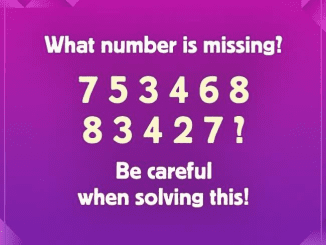With the rise of online scams, recognizing the signs of a potential swindle has never been more important. One surprising tactic fraudsters use involves a seemingly innocent three-word phrase: “Would you kindly.” If you see this message pop up on your phone, it’s time to be on high alert. Understanding why these words can spell trouble will help you protect yourself from falling victim to scams. Let’s break down why you should delete these messages right away.

Why “Would You Kindly” Is a Red Flag
When we think of scam messages, we might expect poor grammar, strange links, or unbelievable offers. But scammers have become more subtle and sophisticated. In recent years, phrases like “Would you kindly” have been used to lure unsuspecting people into a false sense of trust.
According to Tim Bajarin, a seasoned technology analyst, phrases like “kindly” aren’t common in American English. Instead, they tend to be used in countries with British influence, such as Nigeria, India, and Pakistan. This can indicate that the sender might be working from an overseas scam operation.
As Bajarin explains, noticing small details like word choice can serve as a red flag, much like spotting poor spelling or grammar. If you receive a message that contains the word “kindly,” it’s a smart idea to pause before responding.
How Scammers Use Familiar Phrasing to Gain Trust
Scammers know that most people are cautious, so they choose language that feels polite and non-threatening. Phrases like “Would you kindly” or “kindly respond” seem innocuous but can be carefully chosen hooks.
By asking you to “kindly” do something, scammers are trying to present themselves as trustworthy. This polite language can make you feel like you’re dealing with someone friendly or respectful, which lowers your guard. Once you respond, they may attempt to draw you further into their scheme, asking for personal information, offering “investment opportunities,” or convincing you to send them money.
Why Unsolicited Messages Are Often a Scam
Doug Shadel, founder of Fraud Prevention Strategies, emphasizes that almost any unsolicited message should be treated with suspicion. Whether it’s a text, robocall, email, or social media message, if you didn’t initiate the conversation, proceed with caution.
Shadel, who spent years as a fraud investigator, explains that scammers often try to lure you in with generic messages like:
- “Did I miss you today?”
- “Hi, how are you?”
- “I’ll be late for the meeting.”
These openings are intentionally vague, so you’re likely to respond, thinking it’s a simple mistake or an innocent message from someone you know. But once you reply, scammers may continue the conversation and eventually ask for money, personal details, or financial information.

Common Tactics Used by Scammers to Deceive You
Modern scams aren’t limited to suspicious links or emails from princes seeking your help. Today’s scammers have diversified their tactics to be more persuasive and harder to detect. Here are some common tactics used to lure unsuspecting individuals:
- Building Trust and Friendship: Scammers often start by creating a fake friendship. They may chat casually and share personal-sounding stories to make you feel connected. Once they feel you’re comfortable, they’ll make requests for favors or financial help.
- Offering Investment Opportunities: With the popularity of cryptocurrency, scammers frequently claim to have exclusive investment opportunities that promise high returns. They may ask you to invest in a digital currency or an online trading platform, which is nothing more than a scam.
- Pretending to Be an Authority Figure: Some scammers impersonate figures of authority, like bank representatives or IRS agents. They might use intimidating language to get you to act quickly. They’ll often ask you to click a link or provide sensitive information to “resolve an issue.”

How to Handle Suspicious Messages
When faced with a suspicious text or email, taking these steps can help protect your personal information:
- Don’t Respond: If you receive an unsolicited message that seems off, don’t reply. Responding can confirm your number is active, encouraging the scammer to continue targeting you.
- Delete and Block: For texts, delete the message and block the sender. Reporting the number as spam can also help others avoid falling for the same scam.
- Verify the Source: If a message claims to be from a company or organization, don’t click any links or use any contact information provided in the message. Instead, visit the official website and use the contact information listed there to verify the message’s authenticity.
- Use Spam Filters and Reporting Tools: Most mobile providers and email services offer spam filters and reporting tools. Marking messages as spam helps improve these tools for everyone.
What to Do If You’ve Already Responded
If you’ve responded to a scam message and realize you might have shared too much information, take these steps:
- Change Your Passwords: Update your passwords, especially for any accounts tied to the email or phone number the scammer contacted.
- Monitor Your Accounts: Keep an eye on your bank accounts, credit cards, and other financial services for any unusual activity. If you notice anything suspicious, contact your bank immediately.
- Report the Scam: Reach out to your local authorities, as well as consumer protection organizations like the Federal Trade Commission (FTC). Reporting the scam helps authorities track down scammers and prevent future victims.

Reporting Scams: Why It’s Important
Reporting scams may feel like a small step, but it’s crucial in the fight against online fraud. By notifying authorities, you provide valuable information that helps them understand the scope of the issue. They can use this data to allocate resources, spread awareness, and crack down on scammers.
Additionally, reporting helps improve spam and scam detection algorithms. As more people flag these messages, it becomes easier for tech companies to develop effective tools to block suspicious activity before it reaches others.
Conclusion: Stay Cautious and Delete Suspicious Messages
Scams can take many forms, but by being vigilant and knowing the warning signs, you can protect yourself. If you receive a message containing words like “Would you kindly,” it’s time to exercise caution. Scammers prey on trust, politeness, and even confusion, so don’t let them catch you off guard.
Remember, the best rule of thumb is this: if you didn’t initiate the conversation, treat it as a potential scam. By following these steps and staying alert, you can keep yourself and your personal information safe from the growing number of online scams. Delete suspicious messages, report them, and share this information with others to help them stay safe, too.


